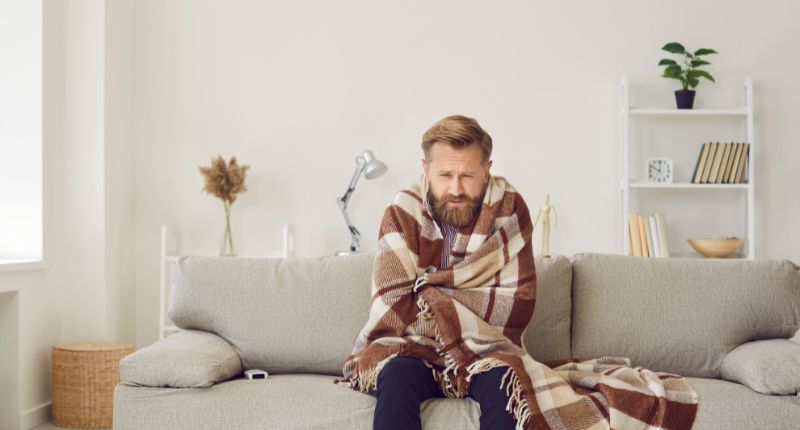
- Many Australian renters lived in homes below the WHO recommended minimum temperature.
- Cold homes pose health risks, including cardiovascular and respiratory problems.
- Renters face challenges in retrofitting homes, leading to high energy costs.
Nearly three in four Australian renters were living in homes with an average indoor temperature below the World Health Organisation (WHO) recommended minimum safe indoor temperature of 18°C, according to a study released by tenant advocacy group Better Renting.
Study finds renters living in unhealthy temperatures
Tracking the temperature and humidity of 59 rentals last winter, the research found that 85% of participants lived in median temperatures below 18°C, spending around half of the time below that temperature.
This equates to 72% of renters in Australia when weighted by population.
These renters living in cold temperatures face an increased risk of cardiovascular disk, respiratory disease, and poor mental health.
The researchers monitored both outdoor and indoor temperatures for comparison. It found that rentals were only a fraction warmer inside than out, around 4°C on average.
Homes in the Australian Capital Territory had the largest difference, with homes more than 7°C warmer. On the other hand, in New South Wales, rentals were merely 2.8°C warmer and were colder inside than outside 20% of the time.
The culprit: Tight rental conditions and high utility costs
While renters are not the only victims of cold temperatures, the impact is notable because they face difficulties retrofitting their homes, and rarely have a secure enough tenure even to make such changes worth their time.
Thus, significant numbers of renters live in homes that are not energy efficient, lacking basic heating amenities, or a combination of both. These groups must either deal with high energy bills, or tough out the cold.
“It’s hard to relax in your home when it’s so cold, I find myself pacing around the home because I don’t want to sit on the cold couch. Winter has this extra mental load, even if you’re not actively thinking about it, it’s always there, thinking about being cold and how to get warm,” said project participant, Ben Morse.
“As a family we’ve tried to live fairly simply, and be aware of our expenditure. We had to start pulling money out of our savings to top up our regular spending and needs.
“Energy costs were a big part of that, you could really see a big jump in those costs and that on top of food costs going crazy. We’ve made the choice to reduce our heater use to balance out those costs.”
Ben Morse, project participant
With vacancy rates at record lows, and power costs remaining high, renters have few alternatives. Burdened with expensive rents and a cost-of-living crisis, many reduce their heating to manage their budget.
Renters powerless to fix their predicament
Furthermore, renters in Australia often have no power to compel their landlords to make repairs around the house, with many choosing to do nothing to avoid being viewed as problematic tenants.
As the onus lies on the renters to make landlords face legal responsibility, renters are fighting an uphill battle when trying to pursue issues. Indeed, escalating problems to tenancy tribunals is often costly and ultimately futile, leaving renters at the risk of being evicted in retaliation.
“This winter renters didn’t have enough power to warm their homes — in more ways than one. In draughty, uninsulated homes, you struggle to reach a decent temperature, even if you are running a heater,” said Better Renting executive director, Joel Dignam.
“But the gaps and cracks in rental homes ultimately reflect the gaps and cracks in our rental laws — renters don’t have the power to exercise their rights, or to demand a decent standard of living.
“We need to see action on minimum energy efficiency standards for rentals. This needs to be complemented by action on unfair evictions and rent increases, so renters don’t have to worry about retaliation every time they speak up for themselves.
“At the same time, governments should be aiming for an abundance of rental housing. If rental vacancy rates were above 5%, we’re confident we’d have a very different rental market, where people paying money to rent a home could be much more assured that it would be fit to live in.”







